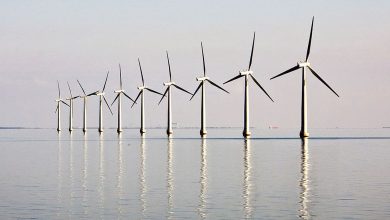Inflation likely peaked in Dec. — poll

By Keisha B. Ta-asan, Reporter
HEADLINE INFLATION likely peaked in December as strong holiday demand and agricultural damage caused by typhoons may have driven food prices higher, according to analysts.
A BusinessWorld poll of 11 analysts yielded a median estimate of 8.3% for December inflation. This is also within the 7.8% to 8.6% forecast given by the Bangko Sentral ng Pilipinas (BSP) last week.
If realized, December would be the ninth straight month that inflation surpassed the BSP’s 2-4% target range.
This would also bring the full-year inflation to 5.8%, matching the BSP’s average forecast for 2022.
December inflation would also be the quickest pace since the 9.1% print in November 2008 at the height of the Global Financial Crisis.
The Philippine Statistics Authority (PSA) will release the consumer price index (CPI) data for December on Thursday, Jan. 5.
Higher prices of agricultural products may have contributed to faster inflation in December, said Colegio de San Juan de Letran Graduate School Associate Professor Emmanuel J. Lopez.
“This was aggravated by the traditional holiday buying spree which increased consumer spending that brings about an increase in prices of basic consumer products normally consumed in the holiday season,” he said.
Prices of most food products considered as Christmas staples by Filipinos have gone up as much as 10% as early as November, according to the Trade department.
The impact of Typhoon Paeng on food supply may have also caused quicker food price inflation last month, Philippine National Bank economist Alvin Joseph A. Arogo said.
“We believe that the impact of Typhoon Paeng’s damage will linger, as the four regions placed under a ‘state of calamity’ until April 2023 contribute 27% to the country’s agriculture, forestry, and fishing output,” Mr. Arogo said.
Severe Tropical Storm Paeng (international name: Nalgae) hit the country in late October, causing about P6.4 billion in agricultural damage.
Crop damage as well as higher demand may have pushed prices of vegetables such as onions, in December. The price of red onions rose to as much as P700 per kilo in December, prompting the Department of Agriculture to implement a suggested retail price of P250 per kilo of red onions.
Meanwhile, China Banking Corp. Chief Economist Domini S. Velasquez, said commodity items exposed to second-round effects may have driven inflation in December.
“This is evident in the expected increase in core prices, which will likely remain above 6% all through the first half of 2023,” Ms. Velasquez said.
Core inflation, which discounts volatile prices of food and fuel, climbed 6.5% in November from 5.9% in October. This is also higher than the 3% print in December 2021. In the eleven months to November, core inflation averaged 3.7%.
She said a decline in pump prices in December was likely offset by the increase in electricity rates and price of liquefied petroleum gas (LPG).
Data from the Department of Energy showed that gasoline, diesel, and kerosene prices decreased by about P2, P2.6, and P3.9 per liter, respectively during the month.
However, Manila Electric Co. (Meralco) raised the overall rate for a typical household by P0.3297 to P10.2769 per kilowatt-hour last month.
The price of LPG products also went up by P2.25 per kilogram and AutoLPG by P1.26 per liter in December, marking the second straight month of price hikes.
“We also do not expect an immediate easing of the second-round effects from the global commodities spike and peso depreciation experienced in 2022,” Mr. Arogo said.
The peso continued to appreciate from its record-low close of P59 against the US dollar. In December alone, the peso strengthened by 0.8% or P0.465 when it closed at P55.755 on Dec. 29 from P56.22 on Dec. 1.
“For 2023, we expect inflation to average at 4.6%, the third year in a row that inflation will breach the BSP’s target (if we use 2012 as baseline for 2021),” Ms. Velasquez said.
She added that upside risks to their forecasts include a likely increase in wages and an earlier-than-expected reopening in China that may push oil prices higher.
The central bank sees inflation to average 4.5% in 2023 before easing to 2.8% in 2024.
“Inflation is expected to begin tempering in (first quarter of 2023) on post-holiday consumption slowdown,” Security Bank Corp. Chief Economist Robert Dan J. Roces said.
He added that the central bank will continue its tightening cycle to combat inflation by hiking 50 basis points (bps) in the first quarter before a long pause this year.
The BSP adjusted policy rates by 350 bps in 2022 to bring down inflation. This is after cutting rates by a total of 200 bps in 2020 to support the pandemic-hit economy.
“Due to the high base effect and our assumption that there would be no new supply shocks in 2023, we estimate that inflation will decelerate starting January 2023. However, the monthly print could only be within the BSP’s 2-4% target range in (fourth quarter 2023),” Mr. Arogo said.
Mr. Lopez said the inflation rate will gradually taper off in the first quarter as consumer spending and supply chain normalizes.
“This will prevail in the year 2023 when inflation rate will reach its target level at around 2-4% as predicted by the BSP,” he added.
BSP Governor Felipe M. Medalla earlier signaled further tightening as the central bank aims to bring down inflation to 3% in the third quarter next year, and back to the 2-4% range by 2024.
The Monetary Board will have its first policy review this year on Feb. 16.




